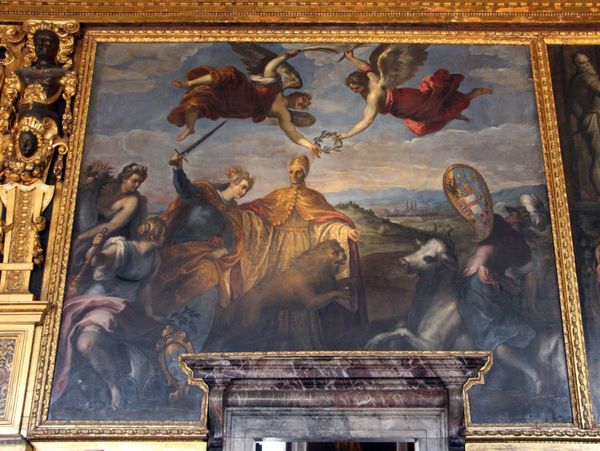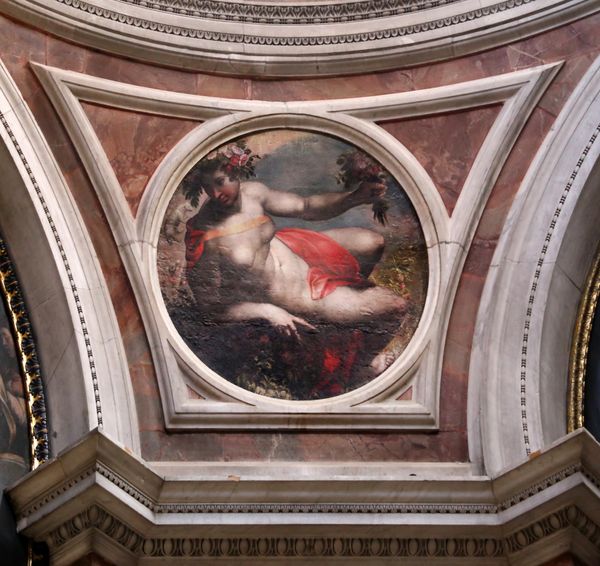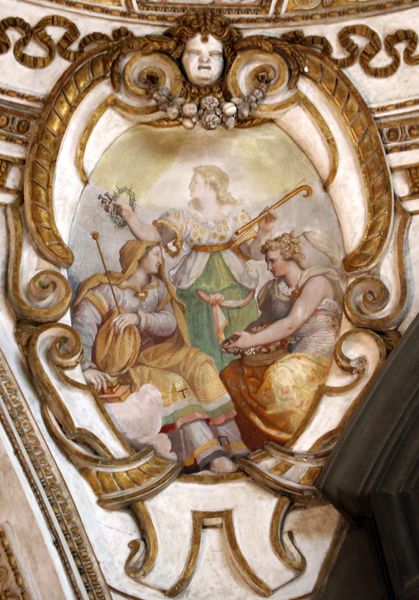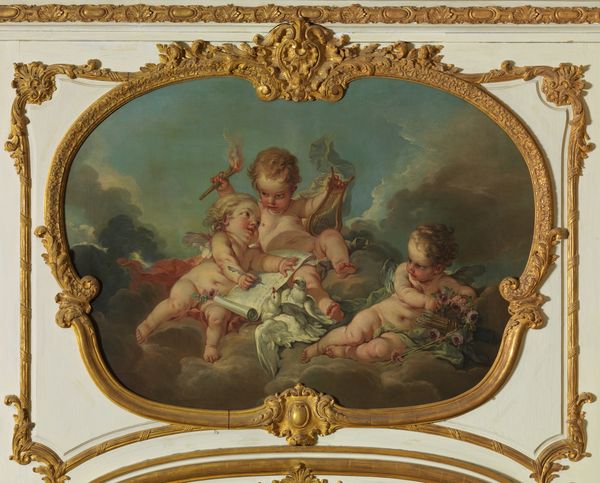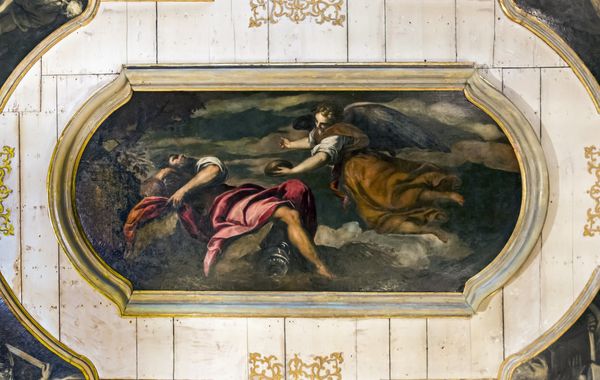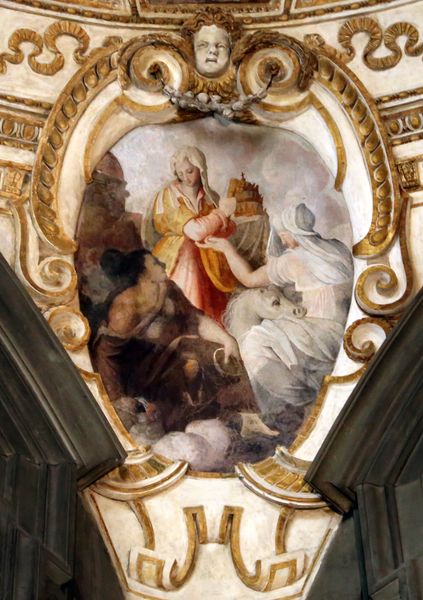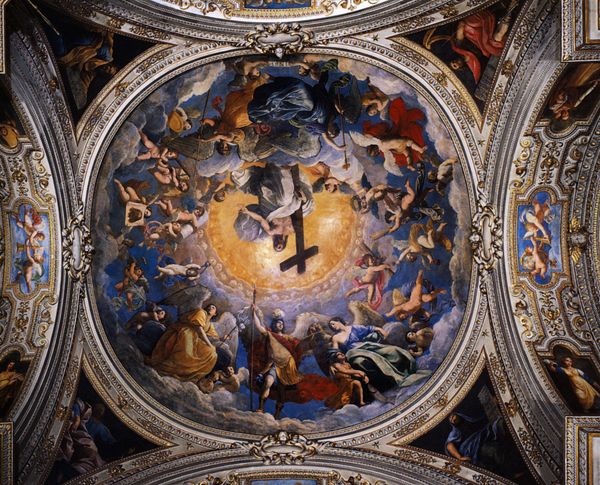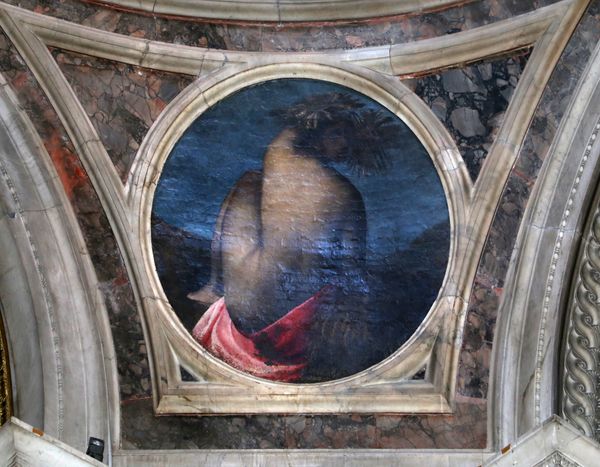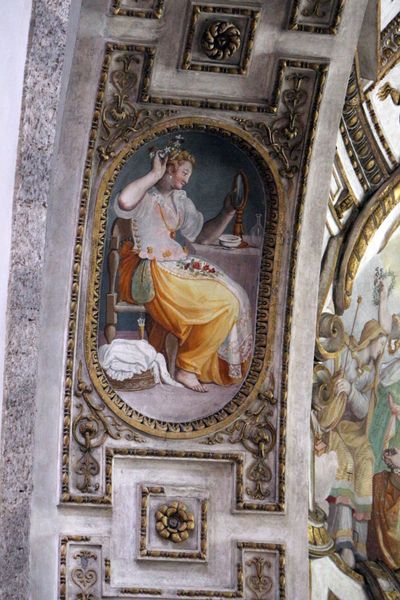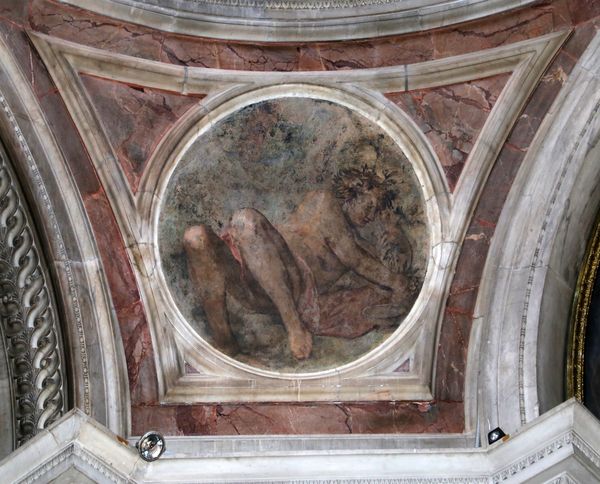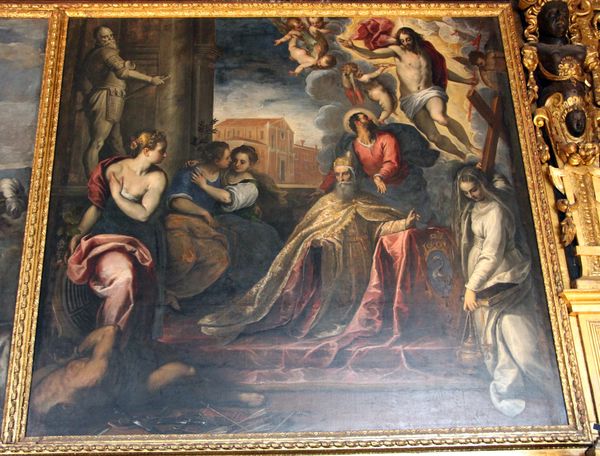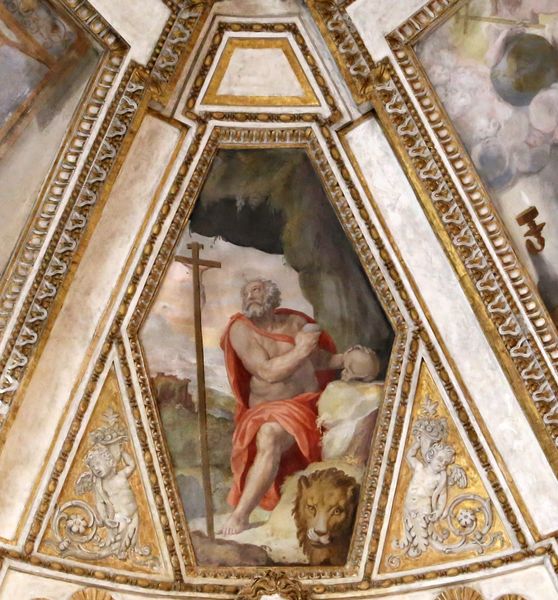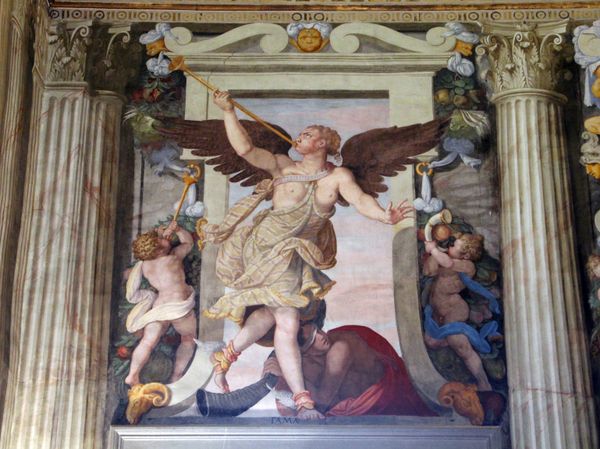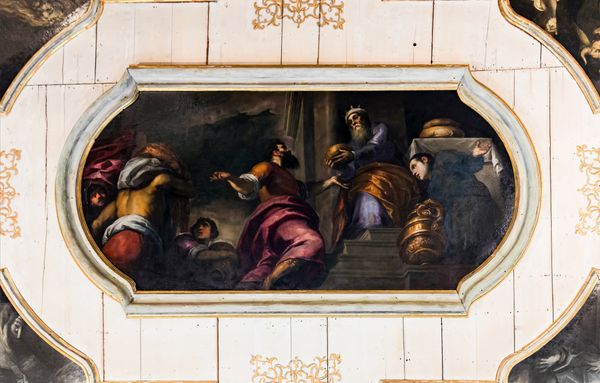
painting, oil-paint, mural
#
allegory
#
baroque
#
painting
#
oil-paint
#
sculpture
#
holy-places
#
sculptural image
#
figuration
#
historic architecture
#
traditional architecture
#
oil painting
#
history-painting
#
mural
Copyright: Public domain
Curator: Looking up at this ceiling mural, the somber mood created by Charles Le Brun's oil painting "Le Soir Ou Morphée," truly resonates, doesn't it? Editor: It does evoke a sense of heaviness, almost exhaustion. You immediately notice the material handling, a stark contrast in textures – the coarse darkness of the clouds and feathers against what appears to be an attempt at a luminous skin tone. Curator: Precisely, the use of oil paint seems essential here. Le Brun, of course, was instrumental in shaping the artistic production under Louis XIV, a system intrinsically linked to courtly power structures. His role speaks volumes about artistic labor and its consumption during this period. Editor: Absolutely, and within those structures, consider how the portrayal of Morpheus functions. Here's this near-naked figure draped somewhat erotically with flowers. One cannot ignore the socio-political implication embedded in what it means to sexualize mythological figures during such imperial conquests. It highlights a kind of masculine, power-hungry fantasy. Curator: I see your point about power. Think about the pigment itself. Where did this ultramarine, this deep crimson, come from? The economic structures supporting art creation at the time allowed access to labor and luxurious goods—these details bring into focus the very concrete, material conditions that produced this dream-like state in art. Editor: Indeed! It calls for deconstruction. The swan-like features of Morpheus are almost gothic, and hint at violence done on the bodies of women. We cannot disconnect aesthetic representations from their function as justification for various colonial enterprises, even those veiled in art. Curator: Do you believe then the allegorical element has become an obstruction to addressing the artwork in this way? I feel we may sometimes lose what is communicated in process while critiquing the content and message. Editor: It is a difficult tension to traverse but absolutely imperative that we consider process AS communication, especially in cases where myth is evoked. Considering both, we move closer to disrupting singular historical views of "masterful art". Curator: Fair enough. I appreciate gaining fresh insight to inform the ways we look into process and production when discussing "Le Soir Ou Morphée". Editor: And, of course, situating historical materialism in today’s complex political art scene encourages critical discussions, as well.
Comments
No comments
Be the first to comment and join the conversation on the ultimate creative platform.
